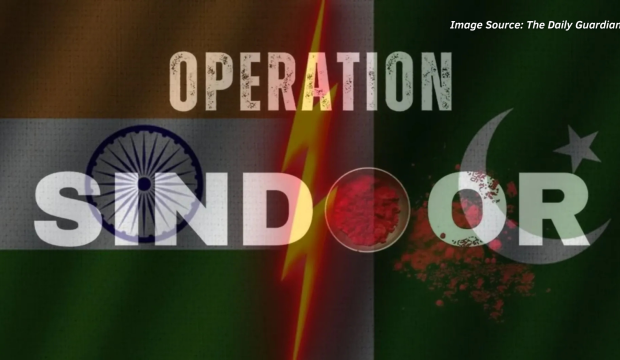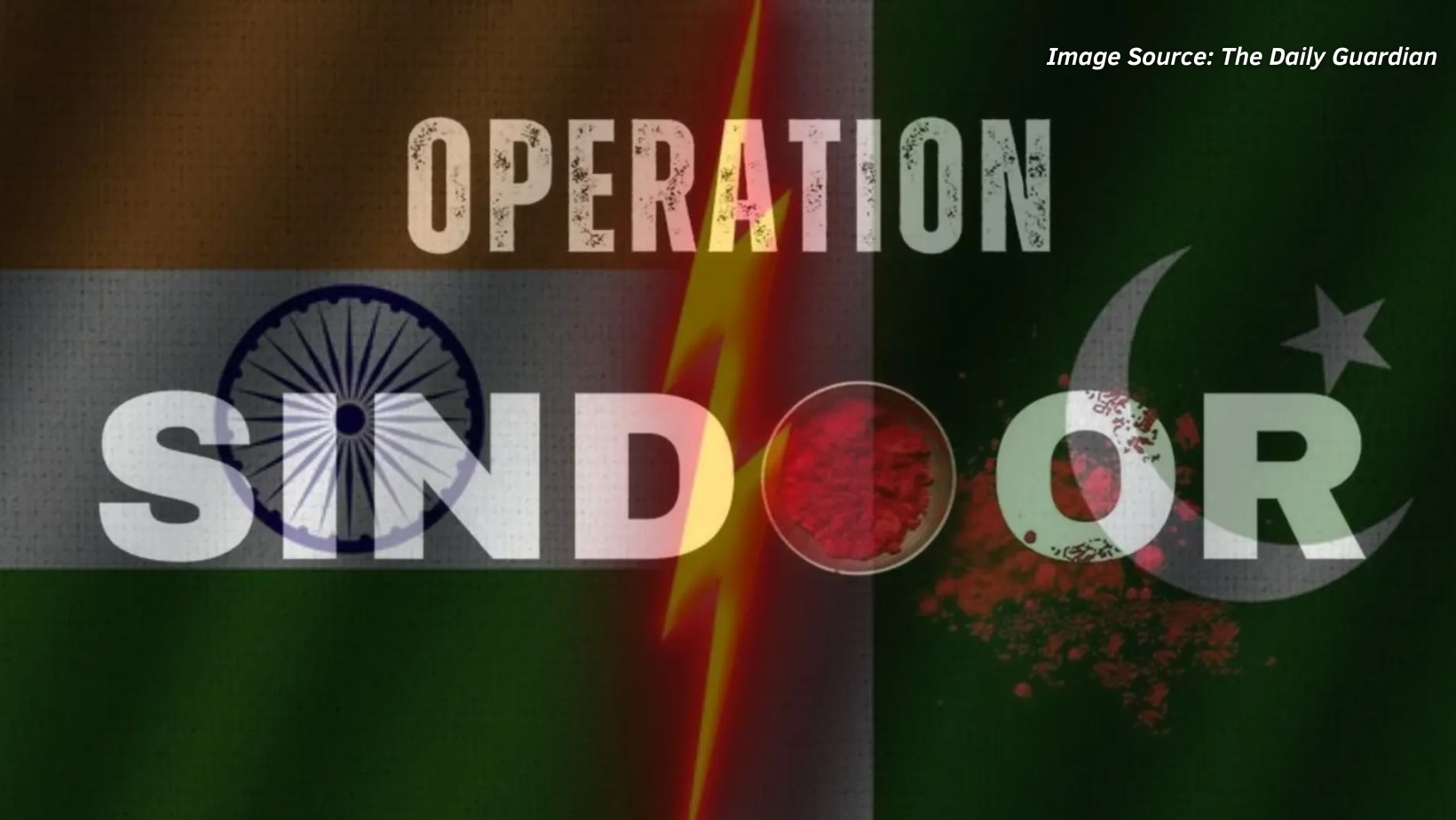“Proud of our DRDO scientists ‘Mission Divyastra’, the first flight test of indigenously developed Agni-5 missile with Multiple Independently Targetable Re-entry Vehicle Technology”
-Narendra Modi
Prime Minister of India on X
Introduction
The Defence Research and Development Organisation (DRDO), India’s premier defence research agency, is set for a major overhaul as a high powered committee, led by former principal scientific advisor Professor K Vijay Raghavan, has submitted its report. This move follows Prime Minister Narendra Modi government’s corporatisation of Ordnance Factory Board two years ago, attempting a shift towards increased autonomy and flexibility for DPSUs. The committee has made several recommendations like setting up of a Defence Technology Council, a larger role to the military, creating a new independent Department of Defence Science, Technology and Innovation, reducing the number of DRDO labs, allowing private sector to carry out research and development of prototypes and a flexible approach to recruitment. It has recommended restricting DRDO to research and development, excluding the production of prototypes, with a focus on creating a robust indigenous defence production ecosystem. The recommendations are wide ranging and could introduce huge amount of entropy in the system if implemented in haste.
Earlier, corporatization of OFB had followed a process similar to the dismantling of royal ordnance factories in UK consequent to which these were supposed to have a more successful future. The general opinion was that these must rely for its future not only on home but on export orders. It had a much better chance of getting better export markets if like private sector it was fully competitive. In the House of Commons debate in 1986, the British Govt had stated, “It remains the Government’s belief that it would be better for the Royal Ordnance factories to be privatised”. Similar sentiments prevailed in Europe. It ultimately led to the sale of Royal Ordnance comprising 16 factories and some 19000 personnel in 1987. (Wiki -Royal Ordnance Factory). Post corporatization, whether these constituents of the Govt owned Defence Industrial base (DIB) are on track to becoming competitive or not only time will tell, but their significant contribution in sustaining legacy systems of the military cannot be overlooked.
With Russian forces invading Ukraine, the clamour for more platforms is getting louder and Western countries are finding it difficult to ramp up platform readiness of even the handful of platforms that have been donated to Ukraine. The much needed industrial and maintenance surge is missing. Therefore, the pursuit of rationalization of the country`s DIB of which DRDO is an integral part has to proceed with caution in view of the existing military landscape in the subcontinent. The crucial element of resilience, a nation`s ability to pursue its National Defence Strategy over extended durations should form the kernel of any reforms.
Self-Reliance
It has been close to 10 years since the Make in India initiative was launched. While there has been significant progress with manufacturing in the civilian sectors, as far as defence manufacturing is concerned the pace has been glacial. It has more been an exercise of proof of concepts, technology demonstrators and supply of locally assembled systems using foreign foundational systems. A hard nosed analysis will reveal that this has been the practice in most new systems that have been rolled out both by private and public sectors; an act that will usher long term vulnerabilities if not addressed now. The Arjun power pack stalemate is a reminder of the operational vulnerabilities of such an approach. Any defence ecosystem is built upon a vast and vibrant network of technology partners and suppliers with open and trusted lines of communications to ensure collaboration and consolidation. The eco system comprising the academia, DRDO labs and other research entities, military`s own innovation centres, DPSUs, private sector enterprises, international technology partners and friendly nations can only deliver high quality products if team work and national interest are at the core.
In India`s defence ecosystem, system design and manufacture remain an act of integration of subsystems (foundational modules) manufactured abroad. Even the recently crafted light tank Zorawar, that is being readied for user trials has adopted this approach with most modules being imported. Use of imported systems like engine, transmission, suspension, communication, navigation, armament and survivability electronics systems will impact affordability of the platform besides spiking maintenance costs. One can only hope that at least the survivability armour is local. All this has been done to meet an unrealistic time line that was neither pragmatic nor desirable. Over the years, there have been hardly any attempts to facilitate growth of sub system and specialist component manufacturers locally. Whatever fleeting attempts were made; were mostly by the maintainers responsible for fleet readiness and mission capability of platforms. Even here, if an MSME indigenised a vital assembly like the air compressor or a control panel, instead of supporting the effort through guaranteed buy back, the first move of the procurement branch was to kill the effort on the pretext of expanding the vendor base.
This has ensured that there was no cache of pragmatic knowledge available with any MSME to qualitatively improve upon an existing component or technology on one hand while on the other expansion of the vendor base has ensured progressively depleting quality of components and LRUs under the L1 regime. A look at the famously advertised indigenisation lists substantiates this argument as elementary items like sockets, bushes, liners, switches, push buttons, masts and lamps figure in the lists. Somebody knowledgeable in the hierarchy should have questioned the DPSUs and DRDO as to why and how this happened. One had to even answer questions as to why develop locally if the item is available ex- import. This was due to absence of Systems Thinking.
One personality who had understood the strategic impact of the systems approach very early was Dr Abdul Kalam and had explained the same to me (a major then) in early nineties when I was tasked to get import clearance on a file related to a new acquisition. This was due to his exposure to Dr Vikram Sarabhai`s approach to capability development. In his book, “My Journey- Transforming Dreams into Action” he states:-
“Dr Sarabhai envisioned India`s space programme as an integrated whole, which would encompass the design and manufacture of rockets, satellites, launch vehicles and launch facilities. A wide ranging programme for development rocket fuels, propulsion systems, aeronautics and aerospace materials, tracking systems and instruments gathered pace at the s Space Science and Technology Centre and Physical Research laboratory at Ahmedabad.” (Abdul Kalam 2013)
Today, the enormous payoffs of this visionary thinking are there to see as innovation and indigenisation have become the key strands of ISRO`s DNA. The enormous success of the Integrated Missile Development programme is also due to the Knowledge Leadership provided by Dr Kalam when he made the shift to DRDO. However, these best practices of sharing strategic direction, collective intelligence and culture of innovation were lost after he moved on. Consequently, DRDO could not respond adroitly to constant shifts in the military`s rising demands – more due to what was happening elsewhere than what was needed for genuine operational capability building.
The Perils of Tall Hierarchies
The report submitted by the committee seems to be full of high impact, recommendations on DRDO`s reset. The establishment of DTC and DSTI ( G Mohan Kumar 2024), appear to have been picked up from the reorganisation carried out by the British MOD in 1995 and 2001 where in Defence Research Agency and some others were amalgamated to form DERA (Defence Evaluation and Research Agency) , regarded by its official history as a jewel in the crown of both Govt and Industry and subsequently rebranded DSTL ( Defence Science and Technology Laboratory ) to carry out research work best done by Govt. Dstl supplies sensitive and specialist science & technology services to MOD and the other Government departments. It leads the formulation, design, and delivery of a coherent and integrated defence science & technology programme, using industrial, academic, and Government resources. (Wiki – DSTL).
However, what may work for UK may not work locally, as requirements for achieving military effectiveness may differ in content and scale. UK depends a lot on its traditional ally, the US and MNCs for retaining operational advantage, technology refresh and readiness of systems. It also needs to be remembered that UK tried these experiments post the establishment of an advanced defence industrial base and after the end of Cold War. The security landscape in the sub-continent is diametrically opposite.
With most modern, efficient outfits maintaining a flat organization, the addition of two layers of bureaucracy is uncalled for, as it is known to stifle communication and empowerment, adversely impacting an organization’s ability to address uncertainties, manage change and be agile enough to avail fleeting opportunities. It may be prudent to shelve it, as 21st century has witnessed unprecedented levels of innovation and growth by dismantling hierarchy not increasing it. Any organization dealing with the military has to be extremely agile and responsive, in view of the drifting user requirements! The RM and his team comprising CDS, Defence Secretary and others can be trusted to trail blaze the self-reliance course through empowerment, collaboration and quick decision making.
Chequered Track Record of DRDO
An honest analysis of DRDO`s achievements will reveal that it has made remarkable contribution to national security by rolling out several complex systems like strategic and tactical missiles, artillery guns and rocket systems, ammunition, soldier systems, radars, EW systems, LCA, nuclear submarine, air defence ship, tank, recovery vehicles and bridge layers. Some may find these not good enough but the environment in which these were brought to fruition… technology sanctions, era of free foreign exchange, military`s preference for foreign systems, drifting user requirements, no allies and MNCs in support unlike the case with DERA; demands that due credits are given to DRDO.

It has had its lows. Even NASA has had periods of mission failures around the turn of this century. The major reason for DRDO`s sub optimal track record in recent years has been on account of some serious oversights:-
- Systems Thinking. Absence of holistic thinking stifled creativity. People focus was lost and it failed to recruit talent which found better avenues abroad, in civil services and private sector. Very few graduates from IITs and NITs joined the workforce, in the last three decades. Its skill development programmes failed to focus on creating niche skills and consolidating pragmatic and tacit knowledge which depleted as seniors retired or migrated. The organization gradually emerged as a project seeking machine, engaged in redundant functions, aimless prototype development, inhibited by financial constraints without sufficient clarity on the military`s specific requirements.
- Strategic Direction. This was sadly missing as Scientists with very narrow fields of specialization (hyper specialists) took the helms. They lacked a full systems view—operational, technological and readiness. Instead of retaining focus on technologies that could provide military effectiveness and consolidation of the impressive work of the eighties and nineties, they focussed on projects related to their areas of expertise. The organisation spread too thin on the ground by unwarranted proliferation of laboratories and engaging in low impact technical work like fire fighting systems, agricultural research, wheeled vehicles, medicines, etc rather than foundational, generic and disruptive technologies. This drastically inhibited it readiness to take upgrades and technology insertion and hence cutting edge R&D to develop future combat systems.
- System Engineering Competencies. A broad science, technology and engineering base is essential to provide the know-how to design, develop, evaluate, support, maintain, and upgrade key platforms and sub-systems. If this was available locally with DRDO, we could have built upon the vast array of platforms in our inventory and transformed these into state of the art through technology insertion. This would have obviated the need to invest in import of new tanks, guns and other complex systems making funds available for force multipliers and enablers. Our fleet continues to remain vintage and efforts to upgrade is turning out to be time consuming and expensive in the absence of suitable local technologies which ideally should have been foreseen and incubated by DRDO. The industry too does not have such capabilities as has been the experience in ongoing programmes.
- Secondment of Uniformed Personnel. In the nineties DRDO stopped the option of permanent secondment of military personnel to DRDO laboratories; a practice that had paid rich dividends in the earlier years in the development of tanks, artillery guns, missiles, rockets, soldier systems and technology insertion programmes in Russian systems. Dr Kalam in his book, “Wings of Fire “has fondly acknowledged the leadership, problem solving and project management skills of uniformed personnel and their contribution to the missile development programme. To name a few, Col (later Lt General) VJ Sundaram, EME, Commodore SR Mohan, IN. (Abdul Kalam 1999). This move though beneficial in the career progression of DRDO scientists, affected diversity thus impacting creativity, multi-agency cooperation and learning. Earlier, young military officers were sponsored for M tech programmes in IITs and institutions like Cranfield Institute of Technology. Post their post-graduation they were posted to labs for working on projects. Besides this, specialist officers and technicians from the Army who were trained abroad were posted to DRDO labs and have contributed significantly in several programmes. This move was affected possibly to grab higher level vacancies which otherwise were to be tenanted by uniformed personnel in select ranks. The new practice of getting officers on tenure proved to be counter-productive.
- Other Structural Issues
– Absence of strategy making process leaving DRDO without corporate direction. Time for a strategy planning group to set its gunsights for at least two to three decades and commence by drafting a Defence Industrial and Defence Technology Strategy for the nation.
– Loss of organizational aura built after the Prithvi, Agni and the nuclear programmes resulting in a weak identity in the last two decades.
-Absence of teamwork amongst stake holders.
– Higher management bogged down by low level tactical and operational issues.
-Poor operational control by project directors making cost and time overruns a USP of DRDO projects.
-Ineffective regulation and audit of operational activities.
-Poor coordination between various laboratories which ended up with the cluster system and addition of another layer of control and reporting. Clusters could have been managed by a flat organization structure through direct reporting.
-Dissipation of tacit and pragmatic knowledge as experienced scientists and technicians retired. To consolidate know how and know why design of new platforms and sub systems should have been pursued. However the import option got exercised instead.
-Absence of a robust outfit for testing and evaluation prior to user trials that led to complete dependence on the military and several years wasted on Type 1 and 2 trials. Presence of uniformed personnel within could have accelerated these trials and early fructification of projects.
Ginning up DRDO
A skilled workforce is essential to delivering the capabilities needed for our security. Niche skills in R&D are often critical to maintaining operational advantage. It is important to consolidate the huge cache of pragmatic and tacit knowledge built over the years with DRDO and build a national workforce that is capable of innovating ahead of the rest of the world. Those vocal for restricting DRDO to R&D in niche technologies while handing over prototype development to private sector need to realise that system engineering skills to design and develop crucial modules and aggregates like power packs, armament module, survivability sub systems, fire control systems, remote weapon stations, detector coolers, seekers, travelling wave tubes, etc leave alone an entire complex system, is simply not available with the industry. These skills and competencies in part are only available with some DPSUs and DRDO. Hence, a logical approach is to first incubate these capabilities in the defence industrial ecosystem by working alongside a mentor i.e. DRDO. Foreign technology partners could come in where capability gaps exist. DRDO needs to put in at least 40% effort in upgrading legacy systems that form the bulk transforming these into cutting edge, 40% on R&D in niche technologies, energetics and future combat systems and 20% or so in strategic systems and civilian end use technologies. Inexplicably, technology insertion has not been on its radar screen, thus making even its own designs obsolescent and ineffective against modern threats.
It is after a decade or more of knowledge sharing and consolidation through public private partnership that the private industry will be in a position to carry out prototype development on its own steam. Till then defence manufacturing in private sector will be akin to assembly of K9, Hermes or loitering munitions supplied to the military. While these actions may be indispensable for meeting immediate operational requirements, it does not address the need of strategic assurance and Atmanirbharta as know how and know why of certain black boxes are seldom shared by OEMs. If we wish to continue employing foreign designed platforms modified for performance in our context, with mediocre and unpredictable readiness levels then it can be business as usual.
Though the report has not been made public, inputs have appeared in the media that indicate that Govt seems to be in sync with committee`s recommendations. The implementation of the recommendations needs to carried out in a calibrated, surefooted manner rather than the rushed through and hasty corporatization of OFB. With one reliable (may not be highly efficient) cornerstone of the country`s DIB still in transient phase, turbulence in DRDO could open up new risks in the security set up of the country. Of course, there is no doubt that DRDO needs to do much more with less and build up an organizational aura like ISRO. A phased implementation of the report hedging risks in the interim would be in national interests:-
- Phase 1 up to 2035. Knowledge transfer and consolidation with industry majors and MSMEs through public private partnership as practiced in the ATV, AD ship projects. Projects like FICV, light tank, wheeled APC, gun missile system, upgrade programmes of Schilka, T72, T90 etc should be implemented under the aegis of a special task force comprising the DRDO, DPSU, industry, anchor institutions of the military and academia. This will help create an indigenous advanced military industrial eco system comprising lead integrators, system and sub system houses, specialist MSMEs, design houses and testing agencies.
- Phase 2 up to 2045. Transfer of complex system development to private sector and MSMEs combine, aiming to develop next generation combat systems like soldier systems, tanks, rocket and gun systems, missiles, warships, rotary and fixed wing machines, UAS, ISR systems, energetics, etc not only for India but also for export. This approach provides a cast iron guarantee of achieving self-reliance and genuine industrial capability creation in an affordable, graduated manner without catastrophic disruptions. It will also stymie a repeat by private sector of what the DPSUs did for the past five decades – screw driver assembly of foreign designed platforms, at exorbitant costs and progressively degrading readiness levels. DRDO can then look at R&D in next generation technologies and innovation to keep the military future ready.
Conclusion
In several countries, like Israel, France, Italy, Russia, China most complex platforms and strategic weapon systems continue to be the domain of Govt owned enterprises built in collaboration with private entities. If such a system can work in France, Israel, Russia, China why do we have to ape the UK or US. This war in Ukraine and Gaza has shown that future wars can be industrial scale wars, prolonged, long duration, accompanied by massive attrition of men and munitions. The side that possesses industrial and maintenance surge will dominate. One impression that has emerged is that countries that had rapidly privatised their defence R&D and manufacturing are finding it difficult to replace daily losses of platforms and ammunition consumption. Russia and Israel seem to be have created the required resilience and are retaining the initiative. Our security landscape also features an adversary that is striving for technological parity with the US, has a huge military industrial complex that is Govt owned and innovative. Hence any tinkering with the indigenous public sector defence industrial complex needs to be taken up with due caution, risk analysis and a long term strategy. Strategic readiness, military effectiveness and technological advantages have to be meticulously planned and incubated through holistic thinking. It can only come in through local talent, local innovation and local supply chain as demonstrated by ISRO. In the effort to optimise performance of one part of the system, damaging consequences can result for the whole system. When faced with a tough adversary it is always better to play the round with clarity and precision, remaining in the fairways than exploring the woods and waterbodies.
DISCLAIMER
The paper is author’s individual scholastic articulation and does not necessarily reflect the views of CENJOWS. The author certifies that the article is original in content, unpublished and it has not been submitted for publication/ web upload elsewhere and that the facts and figures quoted are duly referenced, as needed and are believed to be correct.
Endnotes
- APJ Abdul Kalam, (2013). My Journey, Transforming Dreams into Actions, Rupa Publications, New Delhi.
- G Mohan Kumar, (2024). It is Time to Ginger Up India`s only Defence Research Body.
- APJ Abdul Kumar and Arun Tiwari (1999). Wings of Fire – An Autobiography, Universities Press.








































